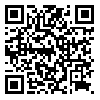1. Pless M, Carlsson M. Effects of motor skill intervention on developmental coordination disorder: a meta–analysis. Adapted Physical Activity Quarterly. 2000;17(4):381–401. [
DOI]
2. Poulsen AA, Ziviani JM, Johnson H, Cuskelly M. Loneliness and life satisfaction of boys with developmental coordination disorder: the impact of leisure participation and perceived freedom in leisure. Hum Mov Sci. 2008;27(2):325–43. [
DOI]
3. Visser J. Developmental coordination disorder: a review of research on subtypes and comorbidities. Hum Mov Sci. 2003;22(4–5):479–93. [
DOI]
4. Smits–Engelsman BCM, Blank R, van der Kaay AC, Mosterd-van der Meijs R, Vlugt–van den Brand E, Polatajko HJ, et al. Efficacy of interventions to improve motor performance in children with developmental coordination disorder: a combined systematic review and meta–analysis. Dev Med Child Neurol. 2013;55(3):229–37. [
DOI]
5. Missiuna C, Rivard L, Bartlett D. Early identification and risk management of children with developmental coordination disorder. Pediatr Phys Ther. 2003;15(1):32–8. [
DOI]
6. Alfailakawi A. The effects of visual training on vision functions and shooting performance level among young handball players. Science, Movement and Health. 2016;16(1):19–24.
7. Kordi M. Barrasi tasir barkhi az avamel mohite bar vazieat tavanaie–haye edraki–harekati danesh amoozan mantaghe 2 Tehran [The effect of environmental factors on the state of perceptual–motor abilities of students in Tehran Region 2]. Harakat. 2000;4(4):63–80. [Persian]
8. Khodabandeh VR, Farahbod M, Pishyareh E, Rahgozar M. Motor–independent visual perception skill indexes are related with reading skills in children with cerebral palsy. Archives of Rehabilitation. 2015;16(3):252–61. [Persian] [
Article]
9. Schoemaker MM, van der Wees M, Flapper B, Verheij-Jansen N, Scholten-Jaegers S, Geuze RH. Perceptual skills of children with developmental coordination disorder. Hum Mov Sci. 2001;20(1–2):111–33. [
DOI]
10. Jeannerod M. The neural and behavioural organization of goal-directed movements. New York, NY, US: Clarendon Press/Oxford University Press; 1988.
11. Sadati Firoozabadi S, Abaci SH. The effectiveness of sensory–motor integration on reading problems in students with learning disabilities. Journal of Learning Disabilities. 2019;8(2):26–37. [Persian] [
Article]
12. Sadeghi S, Mohammadian F, Pouretemad H, Hasanabadi H. The effectiveness of sensory-motor integration on clumsiness in children with nonverbal learning disabilities. Journal of Research in Rehabilitation Sciences. 2016;12(4):210–5. [Persian] [
Article]
13. Dadmehr A, Malekpour M, Ghamarani A, Rahimzadeh S. The effective of sensory-motor stimulation in educable mental retarded students with developmental coordination disorder. Exceptional Education Journal. 2014;2(124):25–32. [Persian] [
Article]
14. Yu JJ, Burnett AF, Sit CH. Motor skill interventions in children with developmental coordination disorder: a systematic review and meta–analysis. Arch Phys Med Rehabil. 2018;99(10):2076–99. [
DOI]
15. Aghdaei M, Azimzadeh E, Akbari D. The effect of local games on visual–motor skills in students with respect to the experience in computer games. Motor Behavior. 2017;9(29):169–82. [Persian] [
Article]
16. Wilson BN, Crawford SG, Green D, Roberts G, Aylott A, Kaplan BJ. Psychometric properties of the revised Developmental Coordination Disorder Questionnaire. Phys Occup Ther Pediatr. 2009;29(2):182–202. [
DOI]
17. Bruininks RH. Bruininks–Oseretsky Test of Motor Proficiency: examiner's manual. Circle Pines, Minn.: American Guidance Service; 1978.
18. Delavar A. Educational and psychological research. Tehran: Virayesh Pub; 2015. [Persian]
19. Salehi H, Afsorde Bakhshayesh R, Movahedi AR, Ghasemi V. Psychometric properties of a Persian version of the Developmental Coordination Disorder Questionnaire in boys aged 6–11 year–old. Psychology of Exceptional Individuals. 2012;1(4):135–61. [Persian] [
Article]
20. Homanian D, Khezri A. The effect of paaryaad training on the development of motor skills of 6–8–year–old children suffering from high function autistic spectrum. Journal of Sports and Motor Development and Learning. 2016;8(3):531–45. [Persian] [
DOI]
21. Fink BE. Sensory–motor integration activities. Tucson, Ariz: Therapy Skill Builders; 1989.
22. Hamboshi L, Arab Ameri E. The effect of motor independent/dependent visual perceptionpractice on depth perception and dynamic visual acuitywithin 7-8-year-old children. Journal of Sabzevar University of Medical Sciences. 2018;25(3):409–17. [Persian] [
Article]
23. Wilson PH, McKenzie BE. Information processing deficits associated with developmental coordination disorder: a meta-analysis of research findings. J Child Psychol Psychiatry. 1998;39(6):829–40.
24. Sabbaghi A, Heirani A, Yousefi B. The effect of selected perceptual–motor training program on perceptual–visual portion in children. Sport Psychology. 2014;6(1):881–90. [Persian] [
Article]
25. Babu RJ, Lillakas L, Irving EL. Dynamics of saccadic adaptation: differences between athletes and nonathletes. Optom Vis Sci. 2005;82(12):1060–5.
26. Reilly C, Nelson DL, Bundy AC. Sensorimotor versus fine motor activities in eliciting vocalizations in autistic children. Occupational Therapy Journal of Research. 1983;3:199–212.
27. González-Ortega D, Díaz-Pernas FJ, Martínez-Zarzuela M, Antón-Rodríguez M. A Kinect-based system for cognitive rehabilitation exercises monitoring. Computer Methods and Programs in Biomedicine. 2014;113(2):620–31. [
DOI]
28. Radovanovic V. The influence of computer games on visual–motor integration in profoundly deaf children. British Journal of Special Education. 2013;40(4):182–8. [
DOI]
29. Saneh A, Salman Z, Aghazadeh M. The impact of physical activities and plays on the development of mental abilities of preschool boys. Quarterly Journal of Educational Innovations. 2008;7(26):87–106. [Persian]





